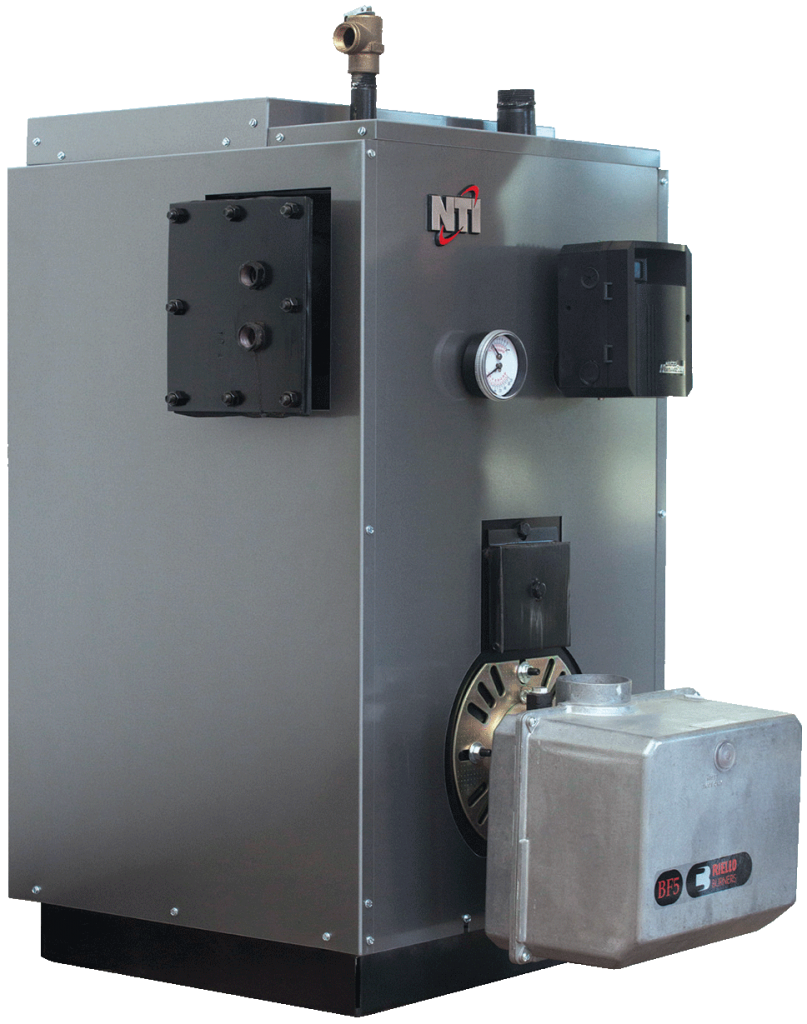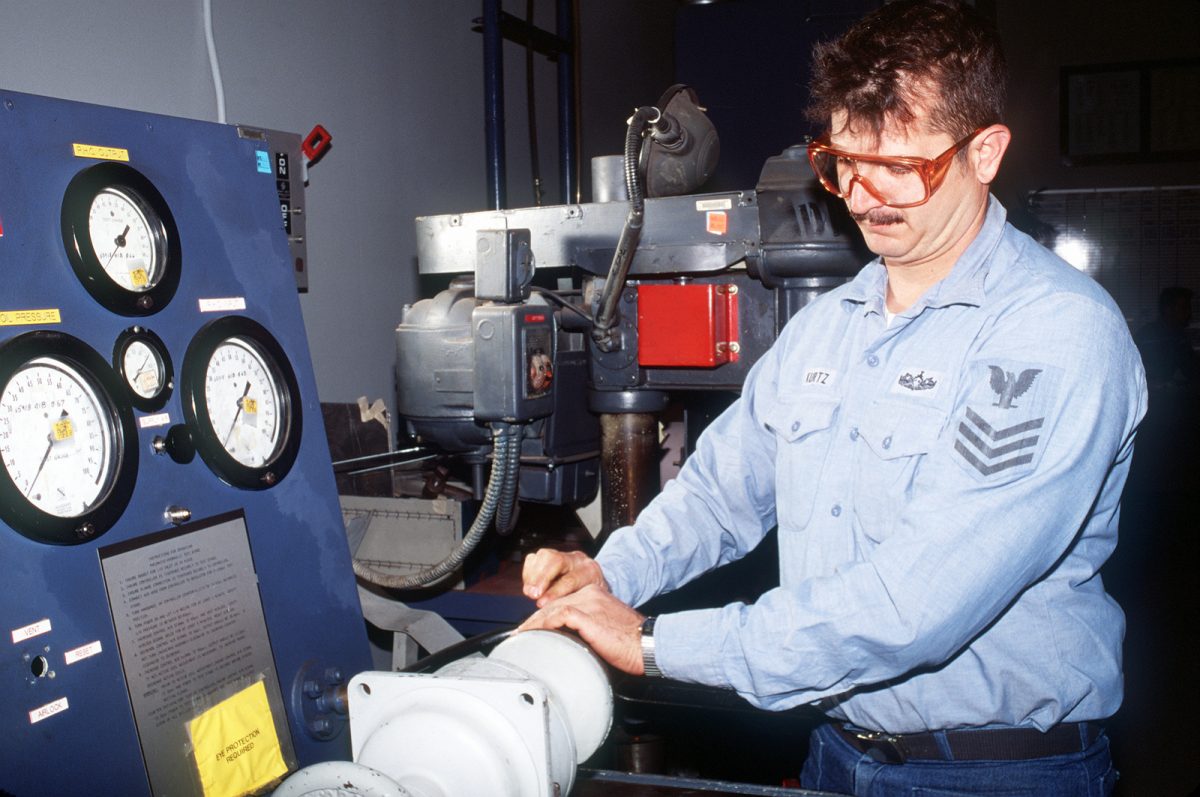Contents
– How a boiler works: 3 principles
– Boiler operation: accessories common to all boilers
– Boiler operation: 4 tips to boost efficiency
– Boiler operation: the controversial case of ionic boilers
Whatever the fuel or heat transfer fluid used, the function of a boiler remains the same: to transmit the calories produced by the energy source to the fluid intended to supply the heat emitters (radiator, convector, exchanger, etc.). There are many ways to achieve this result! Read this post for an overview.
How a boiler works: 3 principles

Smoke tube boilers
In a fire tube boiler, the firebox is extended by a network of pipes in which the hot smoke circulates before being evacuated to the chimney.
This set of pipes is embedded in the heat transfer fluid (most often water, but sometimes oil or air). The heat from the flame and smoke is transferred to the heat transfer fluid by convection.
Note: massive, heavy, and containing a large quantity of water, these water or steam heating boilers are most often made of cast iron or steel and placed on the floor.
Water-tube (or heat exchanger) boilers
In water tube boilers, the flue gases are forced to pass through a heat exchanger and a coil in which the heat transfer liquid circulates. Once again, heat is transferred from the flame to the heat transfer fluid by convection.
Note: These water heating boilers are usually made of steel, small in size, contains little water, have low thermal inertia, and are quick to heat up.
This principle is used for most wall-mounted water boilers and floor-mounted steam and oil boilers.
Electric boilers
Electric boilers have a particular profile. They are not boilers in the ordinary sense of the word since they do not use any fuel. They are hot water storage tanks.
The principle of operation is simple: an immersed electric resistance (or pin) heats the heat transfer liquid contained in the tank.
Note: the main qualities of the electric boiler are reliability (no mechanical parts in motion) and simplicity of installation (no storage or fuel supply, no evacuation pipes). Its major drawback: it is known to be energy-consuming (and electricity is expensive)!
How a boiler works: accessories common to all boilers
All types of boilers must be equipped with accessories to operate efficiently. They are usually grouped around the boiler body and protected by a body for aesthetic reasons.
They include at least :
– an on/off switch ;
– a burner adapted to the fuel;
– a thermostatic device for regulating the water temperature;
– an electronic control box;
– safety elements (overheating, overpressure, lack of water, fuel defect, etc.);
– thermal insulation of the heating body.
And sometimes also:
– a heat-transfer-fluid circulation pump (gas pedal);
– an expansion tank for the closed heat transfer fluid circuit;
– a 3 or 4-way distribution valve;
– a domestic hot water production tank
Boiler operation: 4 tips to boost efficiency
All modern boilers operate on one of the above principles. However, you can improve their efficiency, sometimes by more than 40%.
There is no miracle here, but the recovery of free calories from the application of physical principles often straightforward.
Horizontal combustion, reverse combustion, or forced draft.
Applicable to traditional wood boilers, the particular path of the combustion gases has for goal:
– to dry the wood before burning it to reduce the unburnt material;
– to ensure better management of the fresh air and the draught to improve the combustion and reduce the rate of polluting emissions.
Note: these processes can achieve efficiencies of up to 85% for an energy source that draws on biomass but is considered inefficient.
Condensing boilers
The flue gases discharged by boilers contain water vapor. If these hot flue gases are brought into contact with a coil in which colder water circulates (heating return), the water vapor condenses. This condensation releases heat that warms the return heating water. This is as many calories gained free of charge and CO² emissions avoided.
This discreet and seemingly innocuous trick allows some boilers to pass the 100% efficiency mark and reduce consumption by 15 to 20%.
Good to know: all flame boilers can benefit from condensation, but it has become common for gas and increasingly popular for fuel oil.
Cogeneration boilers
Cogeneration consists of exploiting the principle of condensation to produce electricity by associating it with a Stirling engine.
Thus, 100 kWh of gas produces 16 kWh of electricity and 80 kWh of heat. An inverter allows, if necessary, to use all the resources of the condensation for the heating needs.
Note: the technique can be used with gas, oil, wood, or pellets.
Pulsating combustion boilers
This technique does not require an open burner; it works only with gas. A pilot light initiates the combustion, which is then maintained by self-combustion inside a unique combustion chamber.
Note: this is one of the most efficient condensing boilers (close to 110% efficiency).
Boiler operation: the controversial case of ionic boilers
Ionic boilers, ionization boilers, or electromagnetic induction boilers are electric boilers that do not use electrical resistance. The resistive element is the water itself.
The physical principle used in these devices is electrolysis, so one might wonder if the correlation with ionization is not just a marketing ploy!
Good to know: with an efficiency of 96 to 98%, these boilers are no better than their electric competitors, for an investment 3 or 4 times higher!

